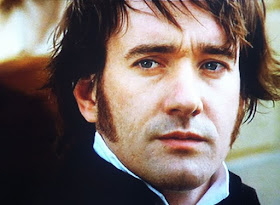 |
| Interior of Strassburg cathedral |
It is an accident of my earliest work on Goethe — the pre-Weimar period — that I am familiar with so many early Germanists. Tom Saine asked, in response to my first submission to the
Goethe Yearbook — on Goethe’s Leipzig poetry — why I did not include any recent scholarship in my essay. Well, aside from a very important article by Heinrich Detering and also work by Stuart Atkins, most of the scholarship on that period came from now-forgotten scholars: Hermann Baumgart, Fritz Brüggemann, Max Hermann, Heinz Kindermann (
Der Rokoko Goethe), Albert Leitzmann. (By the way, Professor Detering just published a
book on Bob Dylan.)
In my ongoing struggle to de-accession books, I recently came across
Goethe: A Symposium, edited by Dagobert D. Runes (another forgotten name!), published in 1932 on the centenary of Goethe’s death. It includes an essay by
Hermann August Korff (he of
Geist der Goethezeit: has anyone read it lately?), and is entitled “Goethe’s Views of Art.” I have read many essays by Goethe on the various arts, but have always felt a certain alienation. His writings on art do not speak to me. Even if the most mundane
New York Times art reviewer does not come from the same place as myself, I at least am aware of where he is coming from: his prejudices (deconstructive, in particular) are very much on view. I even understand Diderot’s essays on 18th-century art better than I do Goethe’s.

Goethe was of not particularly interested in the visual arts of his time. His views, according to Korff, were in opposition to the spirit of the day, indeed produced “out of the spirit of a very noble, but nonetheless doctrinaire erudition.” They are profound thoughts, but do not approach any problems in the artistic milieu of his time. Moreover, his insights on the arts of the Renaissance and antiquity “fall completely within the critical groves hewed by Winckelmann, and are not therefore actually original.” As for the Laocöon group, “before which the eighteenth century lay prostrate, worshiping, [it] is to the present nothing but a stereotyped virtuosity of Greek decadence.” As Korff mentions, Goethe had little access to “true treasures” of the past, so that his views could offer little to “the substance of art history.”
Korff, however, situates Goethe’s artistic views in a way that makes him more understandable to me. His discussion of Goethe’s earliest essay on art,
On German Architecture, is not solely a case of enthusiasm for the architecture. Goethe was not truly “subjugated” by the temper that is known as “Gothic.” The essay reflects more truly his turn away from the neoclassical aesthetics that he had imbibed from Oeser while a student in Leipzig and that formed the content of the poems in the
Neue Lieder and the so-called "Das Buch Annette." The essay on German architecture, a product of his encounter with Herder in Strassburg, leaves aside all of the fine formality that characterizes “neoclassical rococo.” Important for Goethe, in the discussion of the cathedral, is the role of humans in imposing their emotions onto matter. Thus, the term “characteristic,” which for Goethe was the primary condition for true art, grounded in the soul of the artist.
 |
| View of Strassburg cathedral, showing WW2 bomb damage |
As Korff points out, this enthusiasm for architecture was not repeated in Italy, aside from a “momentary infatuation with Palladio” and despite the classical monuments there. In Italy, he simply found substantiation of the views already articulated in the Erwin essay. Henceforth, it makes little difference whether Goethe writes of sculpture or of painting. Of interest in this respect is his fondness for in-between forms: reliefs and vases.
The plastic arts, however, unlike architecture, have imitation as their essence. How to make imitation the expression of a soul?
It is temperament, that of the artist, which becomes “the integrating organ of artistic representation.” An important work of art is not “objective,” as Korff writes, but is “a subjective reproduction of nature — a union of nature and artist, a rebirth of nature out of the spirit of the creator. It is not
the nature, which the artist shows us, but
his nature.”
Goethe’s preference for the classical style derives from his belief in its resistance to change, to mutability. That style was “the only pure embodiment of the principle of form,” of which the restless modern spirit could offer no examples. Thus, for moderns, form was an expression of the soul of the artist. It goes without saying that, for Goethe, the soul could not be vulgar or inharmonious if it were to produce “true art.”
Korff’s essay has led me to think that Goethe was looking for a “spiritual principle” in art, but at the same time seeking a motivation that was not Christian. Christian art, one might say, was the embodiment of eternal, unchanging principles, but Goethe did not like those principles. In addition, even when he wrote the Erwin essay, before his closer study of ancient art, agreed-upon standards in art were giving way to the production of artistic works that had the stamp of the individual artist. Goethe, however, wished to “ground” art in something besides mere personality.













